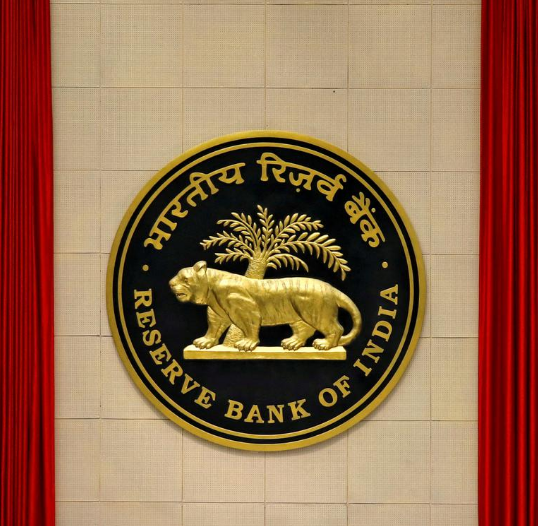Context:
Recently, a working group formed by the Reserve Bank of India (RBI) has put forth specific recommendations to resolve concerns associated with guarantees provided by State governments. These suggestions are anticipated to promote better fiscal management by the State governments.
What is a Guarantee?
- A ‘guarantee’ is a legal commitment wherein a State assumes responsibility for making payments, safeguarding an investor or lender from the potential default risk of a borrower. According to the Indian Contracts Act (1872), it is a contract that involves three parties: the principal debtor, creditor, and surety. The principal debtor is the entity at risk of default, the creditor is the recipient of the guarantee, and the entity providing the guarantee (State governments in this context) is termed the ‘surety.’
- In a scenario where A provides goods or services to B, and B fails to fulfil the agreed payment, B is considered in default and may face legal action for the outstanding debt. At this point, C intervenes, pledging to cover the payment on behalf of B, and A agrees to this arrangement, constituting a guarantee.
What is the Purpose of a Guarantee?
The primary purpose of a ‘guarantee’ at the State level includes three critical scenarios.
- Firstly, sovereign guarantees become essential for obtaining concessional loans from bilateral or multilateral agencies, particularly for public sector enterprises.
- Secondly, guarantees are employed to enhance the viability of projects or activities that hold the potential to deliver significant social and economic benefits.
- Lastly, guarantees are utilised to facilitate public sector enterprises in securing resources at lower interest rates or under more favourable terms.
Implications:
- Financial Convenience: Guarantees are favoured for their financial flexibility, allowing entities to secure support without an immediate need for upfront cash payments.
- Fiscal Risks: Guarantees, seemingly innocuous in favourable conditions, pose significant fiscal risks during economic challenges, leading to unforeseen cash outflows and increased debt.
- Difficulty in Estimating Costs: The unpredictable triggering of guarantees by specific events makes it challenging for entities to accurately estimate potential costs and timing of cash outflows, complicating effective financial planning.

Recommendations By the RBI Working Group:
- Unified Treatment of Guarantees: Eliminating distinctions based on conditions or types of guarantees, emphasising that all guarantees, regardless of their nature, involve contingent liabilities that may crystallise in the future.
- Broad Definition of Guarantees: The term ‘guarantee’ should be interpreted broadly, including all the instruments known by any name that may impose an obligation on the Guarantor (State Government) to make payments on behalf of the borrower (State Enterprise) at a future date.
Guidelines for Government Guarantees: State Governments should adhere to guidelines issued by the Government of India when formulating their Guarantee policy:
- Guarantees may be given only for the principal amount and normal interest component of the underlying loan;
- Guarantees may not be extended for external commercial borrowings;
- State Government may not extend a guarantee for more than 80 per cent of the project loan, depending on the conditions imposed by the lender;
- Guarantees, once approved, shall not be transferred to any other agency without the prior approval of the Finance Department;
- Government guarantees shall not be provided to private sector companies/ institutions; and
- Appropriate pre-conditions may be specified by the Government while giving the guarantees, e.g., period of guarantee, levy of a fee to cover risk, representation for Government on the Board of Management of the borrowing entity, mortgage or lien on its assets, submission of periodic reports and accounts to Government, right to get its accounts audited, etc.
- Defined Purpose of Government Guarantees: The purpose for issuing government guarantees should align with Rule 276 of General Financial Rules, 2017. Guarantees should not substitute budgetary resources or create direct liabilities for the state.
- Standardized Reporting of Guarantee Data: State Governments should disclose guarantee-related data following Indian Government Accounting Standards (IGAS), facilitating auditing by the Comptroller and Auditor General (CAG) and the RBI.
- Ceiling on Issuance of Guarantees: A reasonable ceiling on guarantees issued by State Governments, i.e. 5% of Revenue Receipts or 0.5% of Gross State Domestic Product (GSDP), whichever is lower.
- Risk Categorization and Weightage: State Governments should classify projects/activities as high, medium, or low risk, assigning appropriate risk weights. Past default records should be considered in risk assessment, and states should disclose their risk weight assignment methodology.
- Guarantee Fee Structure: The guarantee fee charged should reflect the riskiness of borrowers/projects/activities.
- Building Guarantee Redemption Fund (GRF): States should contribute to building the Guarantee Redemption Fund (GRF), aiming for a desirable level of 5% of their total outstanding guarantees over five years from the fund’s constitution.
About RBI:
| Aspect | Information |
| Establishment | April 1, 1935, by the Reserve Bank of India Act, 1934 |
| Headquarters | Mumbai, Maharashtra, India |
| Governor | Shaktikanta Das |
| Monetary Policy Framework | Inflation Targeting Framework |
| Key Monetary Policy Rate | Repo Rate |
| Banker to the Government | RBI acts as the banker, agent, and advisor to the Government of India |
| Ownership | Wholly owned by the Government of India |
| Board of Directors | Central Board of Directors, including the Governor and Deputy Governors, appointed by the Government of India |
| Regulatory Authority | Regulates and supervises banks and financial institutions in India |
| Financial Stability Mandate | Responsible for maintaining financial stability in the country |
| Currency Management | Issues and manages the supply of currency and credit in the economy. |
| Foreign Exchange Reserves | Manages and maintains India’s foreign exchange reserves |

